Related Research Articles

The Rathaus-Glockenspiel is a large mechanical clock located in Marienplatz Square, in the heart of Munich, Germany. Famous for its life-size characters, the clock twice daily re-enacts scenes from Munich's history. First is the story of the marriage of Duke Wilhelm V to Renata of Lorraine in 1568, followed by the story of the Schäfflerstanz, also known as the coopers' dance.

Wichard Joachim Heinrich von Möllendorf was a Generalfeldmarschall of the Kingdom of Prussia.
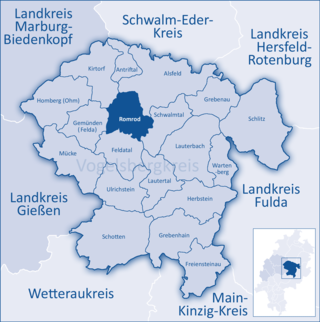
Romrod is a small town in the Vogelsbergkreis in central Hesse, Germany.
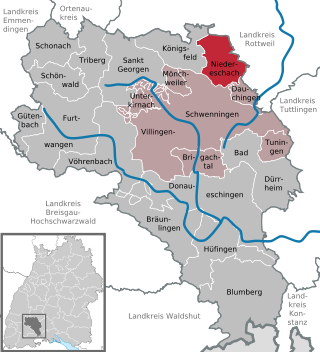
Niedereschach is a town, with 6000 inhabitants, in the district of Schwarzwald-Baar in Baden-Württemberg in Germany.

Marchtal Abbey is a former Premonstratensian monastery in Obermarchtal in the Alb-Donau-Kreis, Baden-Württemberg, Germany. The minster church of Saints Peter and Paul, the former abbey church, located on a prominent elevation, still dominates the landscape for miles around.

Schloss Taxis is a privately owned castle in Dischingen in the Heidenheim district of Baden-Württemberg in Germany. The castle is owned by the princely house of Thurn und Taxis and is not open for visitors.
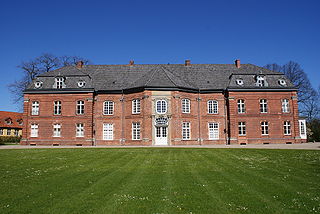
The Princes' House in Plön in the North German state of Schleswig-Holstein is a former royal summer residence in the grounds of the park at Plön Castle. It is the only surviving maison de plaisance in Schleswig-Holstein.

The Deutsche Stiftung Denkmalschutz is a German private initiative founded in 1985 that works for the preservation of cultural heritage in Germany and to promote the idea of cultural heritage management.

Wülflingen Castle is a castle in the city of Winterthur and the canton of Zurich in Switzerland. It is a Swiss heritage site of national significance.

Schwarzenburg Castle is a castle in the municipality of Schwarzenburg of the Canton of Bern in Switzerland. It is a Swiss heritage site of national significance.

The Schlossplatz forms the center of the historic Old Town of Wiesbaden, Hesse, Germany. It gets its name from the Stadtschloss, the royal residence of the Dukes of Nassau located on the north side of the square. Other buildings surrounding the Schlossplatz include the Old City Hall, the New Town Hall and the Marktkirche. In the middle of the square stands the Marktbrunnen of 1753. Due to this unique building ensemble, and the fact that at this point medieval Wiesbaden originated, it is historically the most important part of the city. Occasionally it is referred to as the "market square", its name before the palace was built.
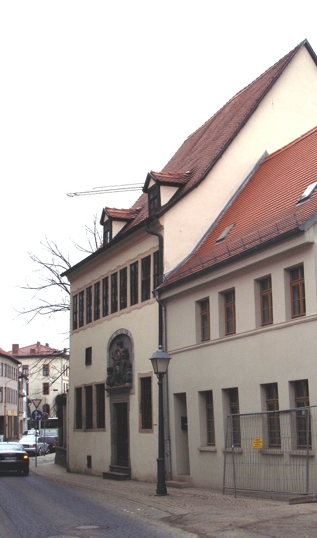
Martin Luther's Birth House is a building and museum in Eisleben, Germany. The German religious reformer Martin Luther was born there in 1483. However, the actual house in which Luther was born no longer exists, it having been burnt completely to the ground in 1689. A new building was built on the original site and was opened to the public in 1693, although it did not adhere to the original floor plan and size of the former house. An excavation was carried out in 2006, revealing pottery shards and a clay floor from the original house.

The Badischer Hof is the oldest hotel in Tauberbischofsheim. In 1733 it was built as the former Adelshof by the knight Anton Phillip von Fleischmann. Later, it was as a post office. In 1811 it received its present name: Badischer Hof. In 1894 a hall with large arched windows was added. In the hotel there is also a nostalgic movie theater. The house was obtained externally faithfully and since eight generations it belongs to the family Derr. It is a listed building.
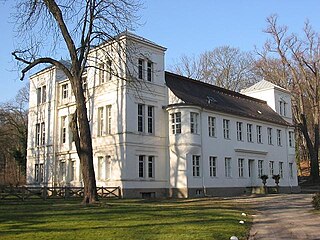
The Schloss Tegel or Humboldt-Schloss is a country house in Tegel, part of the Reinickendorf district of the German capital Berlin. The brothers Wilhelm and Alexander von Humboldt spent much of their childhood in a former schloss on the site and on the estate, which extends almost as far as Lake Tegel.

The Kleine Schloss in Wolfenbüttel is a Baroque building in the town of Wolfenbüttel in Lower Saxony. It is sited next to the Schloss Wolfenbüttel on what is now the Schlossplatz. It was first built in 1643 but has been frequently extended, demolished and rebuilt.
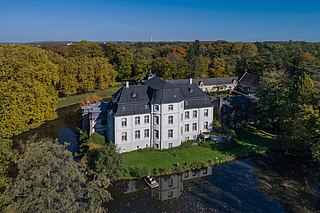
Schloss Türnich is a schloss located in Türnich, now part of Kerpen, North Rhine-Westphalia, Germany. The present main building was built from 1757 to 1766 in Baroque style, with an adjacent English landscape park. It has belonged to the Hoensbroech family since 1850. A richly decorated chapel was added in 1895.
Dankwart Guratzsch is a German journalist. He has made a name for himself above all as an architecture critic.

The Schlosskapelle Mitterberg is a 1650 built Chapel in the municipality of Rüstorf in Upper Austria. It was once part of the Mitterberg castle. It was restored from 1997 to 2003 and used as an Ecumenist chapel of the Holy Trinity. The chapel is under Deutsche Stiftung Denkmalschutz.
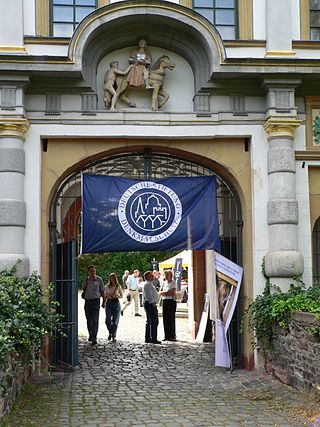
The Tag des offenen Denkmals is an annual event all over Germany. The day of action has been coordinated by the Deutsche Stiftung Denkmalschutz since 1993. Historic monuments are open to the public free of charge. It takes place on the second Sunday in September and attracts several million visitors each year. The largest cultural event in Germany is the contribution of the country to the European Heritage Days.

The mausoleum in the Gadow Castle Park in the northwest of the Prignitz in Brandenburg was built in 1816 for the late Royal Prussian Field marshal Wichard Joachim Heinrich von Möllendorf (1724–1816). The architectural plans come from the Prussian architect Salomo Sachs. The building is one of the outstanding classicist monuments in Prignitz and the northwest Brandenburg region and is a listed building.
References
- ↑ "Schloss Granegg ist fast vergessen",
- 1 2 "Schloss Graneck (Schlossbauern) [Wohnplatz]", article at leo-bw.de
- ↑ "Der Bockshof Archived 2014-02-01 at the Wayback Machine ", article at rottweil.net
- ↑ "Bronzeplakette erinnert an Förderung in Niedereschach". Deutsche Stiftung Denkmalschutz (in German). Retrieved 2019-04-10.
48°08′28″N8°29′38″E / 48.141°N 8.494°E